

A plate condenser is also known as a condenser heat exchanger or plate type condenser. It is a condenser developed for condensing steam based on an evaporation or distillation system under vacuum conditions. It is based on the semi-welding technique and consists of a special plate pack and gaskets. The cooling medium is warmed up in a channel with a gasket, and the steam is condensed in the welded channel. The steam has a large inlet and a small condensate outlet.
The plate condenser is primarily used in conjunction with a plate evaporator as a condensation of steam in an evaporation or distillation system. For example, the condensation of steam in the syrup 3-effect evaporation system, the condensation of steam in the juice 3-effect evaporation system, and the condensation of steam in the multi-effect evaporation system of the ethanol concentration in the ethanol industry, pan vapor condensers in sugar refineries, and as turbine condensers in small power plants.
It is used in more and more condensation occasions due to its high heat exchange effect, low input cost, and convenient maintenance operation. Which is ideal as an alternative to bulky indirect shell-and-tube condensers.
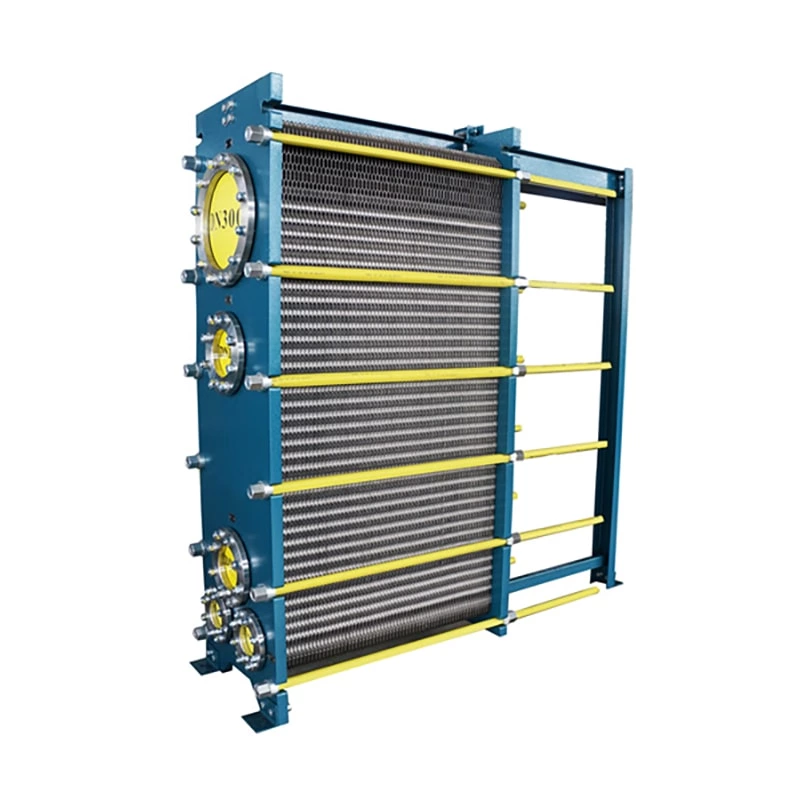
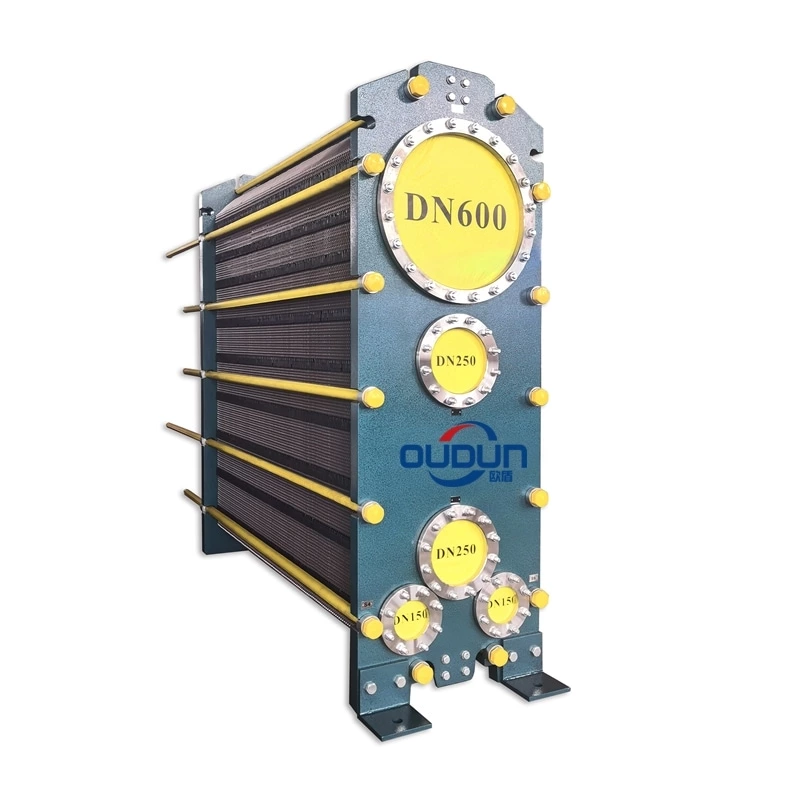

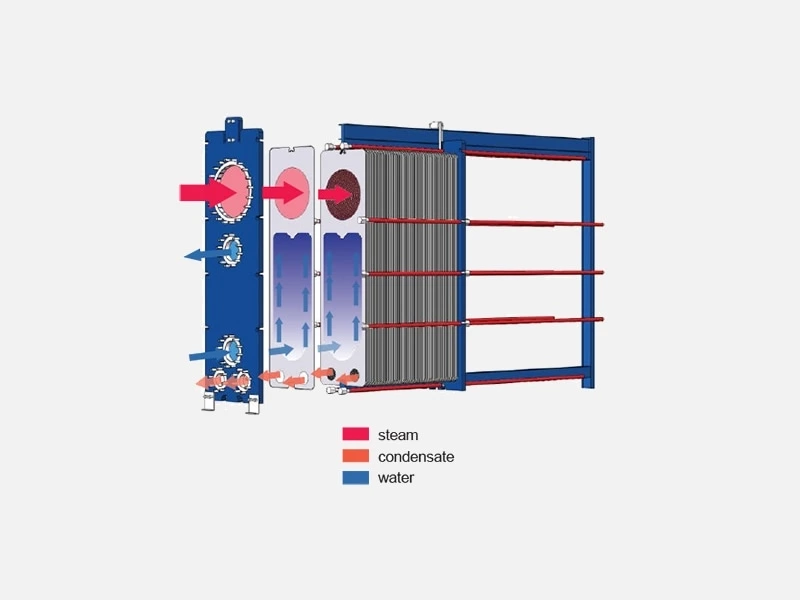
As same to Semi-Welded Plate Heat Exchanger, the sealing between the plates on the Condensor alternates between laser welds and gaskets. It has a unique porthole configuration that is specifically designed for vacuum condensation. Vapour condenses in the welded channel and the cooling water passes through the gasketed channel.
The channel gap size is asymmetric with a larger gap on the vapor side and a smaller gap on the cooling water side. The result is a very low-pressure drop on the vapor side and high velocity and turbulence on the cooling water side. Together, these maximize heat transfer efficiency and minimize fouling.
Plate Condensers are easily accessible for inspection and mechanical cleaning by removing the tightening bolts and rolling back the pressure plate. By adding or removing Plates the Plate Condenser can be modified to cope with changes in process conditions which with a Shell and Tube Heat Exchanger is not possible.
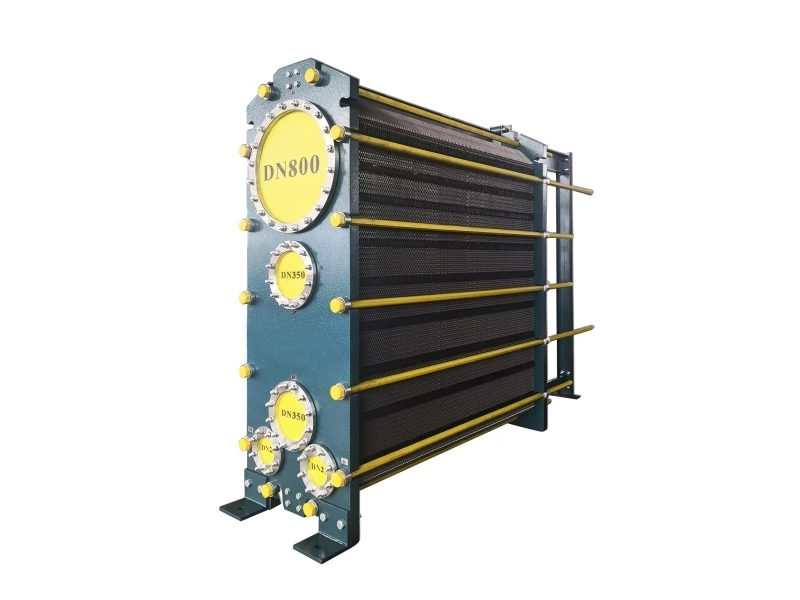
Porthole configuration – Specially designed for maximizing vacuum condensation.
Different channel gap sizes of two side media – A lower pressure drop, allow higher velocity and turbulence, thus maximizing heat transfer efficiency and minimizing fouling.
Compact welded structure– Lower equipment cost and easier maintenance.
Easy Installation– Equipped with a well-designed frame system, installation does not require heavy-duty tools, just a special light Spanner is enough.
Multiple models provide the best choice -In OUDUN, we have multiple models that are suitable for various working conditions selection.
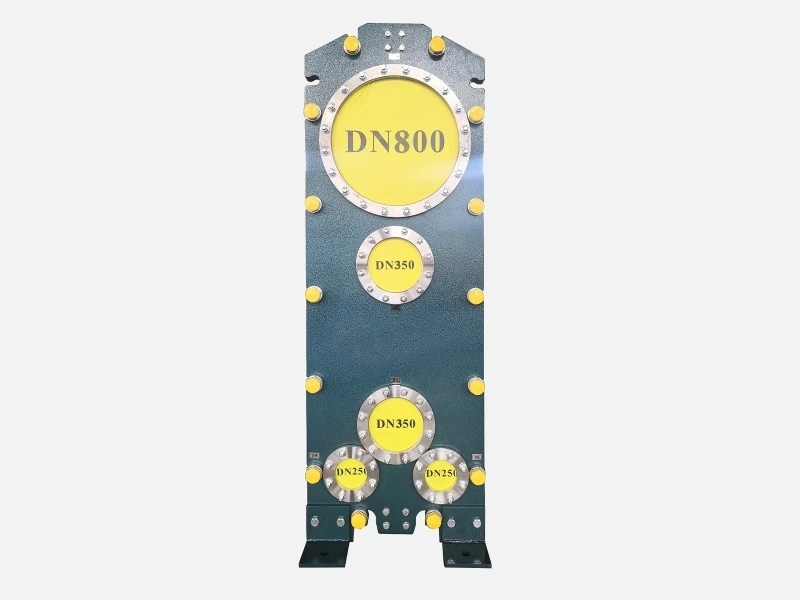
Plate: 304 / 316L
Gasket: NBR, EPDM, FKM

Please send your information to us and we will give you feedback in time.